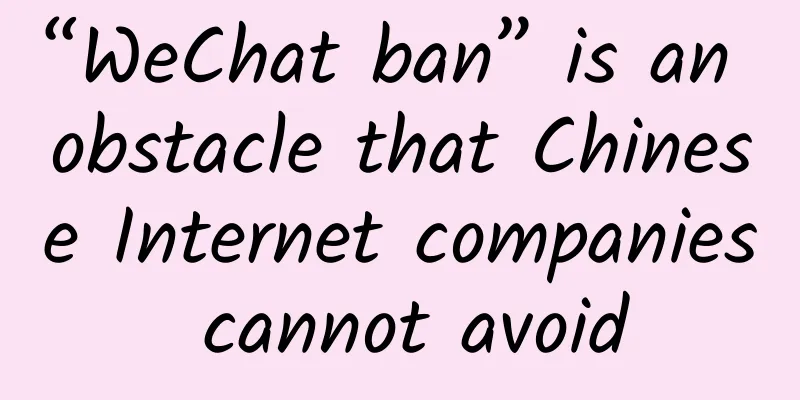China Unicom's Cai Xiyan: Breaking the bottleneck of network coverage and traffic will accelerate the development of the short video industry

|
In 2017, the wave of live streaming is fading, and short videos are taking over and becoming the new focus of the video field. As a result, in order to present short video content to users, someone always needs to build a suitable platform for it. These include Miaopai and Kuaishou, which focus on internet celebrity elements; Toutiao, which converts graphic and text information into video at high speed; or traditional video websites represented by iQiyi and Youku, which have joined the short video war. But we must not forget that in the era of mobile Internet, operators who have inherent advantages in mobile networks and data traffic also have the opportunity to become disruptors in the short video industry. What role can the operator platform play in the rise of short videos? Recently, on this topic, we had an in-depth exchange and communication with Cai Xiyan, deputy general manager of the Digital Content Innovation and Development Department of China Unicom Guangdong Branch. From wild growth to industry reshuffle, operators usher in new opportunities in short videos Just as the emergence of all new things is accompanied by controversy, people's controversy over the development of short videos mainly focuses on the selection of content and themes. With the rise of platforms such as Kuaishou, crude and vulgar have gradually become labels that users have attached to short video content, which has also sown concerns about the future direction of the short video industry. Today, when the entire industry has not made a strict definition of short videos, Cai Xiyan admits that there are many types of short video content nowadays, from UGC show live broadcasts to news information, film and television drama highlight clips, and so on. Many people classify the current development of the short video industry as a period of wild growth, which directly leads to the reality that industry supervision lags significantly behind the overall business development. However, after industry rules are gradually standardized and improved, under the regulatory environment, the short video industry will inevitably usher in a new reshuffle. Cai Xiyan took the development of the live broadcast industry as an example. After the State Administration of Radio, Film and Television began to regulate the live broadcast industry last year, the entire industry encountered a bottleneck period. For example, the number of monthly active users of the live broadcast platform Inke dropped by 30% in the first quarter. The development of the short video industry needs to be standardized, which means that operator platforms that are strictly monitored by the state and strictly supervised by broadcasters will have a more effective grasp of the content standardization standards. Cai Xiyan also said that in the upcoming reshuffle of the short video industry, not only will the wild growth rate of the entire industry slow down and the development track become more standardized, but the existing development models of many existing private Internet companies in the short video field will also become unsustainable. In comparison, state-owned operators that can achieve better content supervision will obviously have greater opportunities to overtake others. Traffic reform promotes industry turning point, operators have a killer advantage in short video Some people say that the explosion of short videos started this year, but Cai Xiyan thinks it should be counted from an earlier time and is closely related to the popularization of 4G networks. However, the popularity of 4G has increased the speed of mobile Internet access, but it has not changed the domestic users' habit of wasting data traffic, especially watching videos with mobile data. For most ordinary users, it will undoubtedly take some time to accept it. From the data, taking China Unicom's 4G network as an example, it can provide users with 380M downstream and 50M upstream bandwidth, which basically meets the network conditions required for online video content. Cultivating the new normal of users watching videos with data traffic has become a very important entry point for operators to deploy short videos. Cai Xiyan introduced that in recent years, operators have been increasing their efforts to release video traffic in a targeted manner. For example, in 2017, Wo Video, a subsidiary of China Unicom, has achieved standard-definition free traffic for China Unicom network users. He believes that from the perspective of operators, including China Mobile and China Telecom, there will be more diversified video traffic preferential measures, which will extend the scenarios for users to watch videos from areas covered by Wi-Fi to anytime and anywhere, which will bring about a qualitative change in the development trajectory of the short video industry. Compared with Internet short video platforms that are purely oriented towards content distribution, short video content on operator platforms, combined with network advantages, can focus on multiple aspects such as network traffic and coverage of the population to provide the best experience. Coupled with strict control over content supervision, the overall result is that there is reason to allow more short video producers and self-media to lean towards operator platforms, which constitute the best soil for content incubation and popularization. Cai Xiyan revealed that the next plan of Wo Video is to expand its content from previous film and television dramas to the fields of UGC and PGC short videos, and to introduce relevant self-media content support plans to push the short video content on the platform to a user group of tens of millions. It is also worth noting that Cai Xiyan also affirmed the idea that operators will rely on their network traffic advantages to reach cooperation with third-party video platforms in the future, and there is hope to explore a win-win situation that will enhance user stickiness to traffic on the one hand and extend the usage scenarios of video platforms on the other. He emphasized that operators have begun to regard video as a basic business and are willing to work with industry partners to expand the video business. Multi-terminal + diversified business model The future of short videos has more possibilities Cai Xiyan has always believed that short videos cannot be regarded as a new form or category of videos, but a means of video itself. It is a basic form rather than a value-added form. Regarding the future of short videos, Cai Xiyan described two aspects of the outlook from the perspective of an operator practitioner. First, in terms of business model and monetization form, most of the existing short videos rely on backward monetization, that is, users have not formed the habit of paying for short videos, and short video content has not found a better form of advertising implantation. For example, short videos about games are essentially a part of the extension of the gaming industry chain, and their purpose is to accelerate the monetization of related gaming equipment and props. Another example is short videos about vertical finance, whose goal is to guide potential customers to purchase related financial products. However, in the future, short videos may not be limited to entertainment needs, but instead show more of a carrier-based trend. Short videos have the conditions and foundation to carry content in many aspects including education, communication, and medical care, and to realize diversified presentation forms such as sports events, news reports, and health promotion. They can shift from backward monetization to exploring forward monetization and even multi-directional commercial monetization methods. Secondly, in terms of terminal categories covered by short videos, the general trend of the Internet of Things will push them out of the framework of mobile phone screens and move towards more intelligent terminal devices. For example, at present, car screens and smart wearable devices have become China Unicom’s new focus in video business, and are expected to become new user scenarios for short videos. In the words of Cai Xiyan, short videos will not be a short-lived thing, but will exist for a relatively long time. Its long-term predictability is not only the choice of users and the trend of the times, but also the inevitable result of relevant practitioners, including operators, being optimistic about the short video industry and constantly exploring its potential value. As a winner of Toutiao's Qingyun Plan and Baijiahao's Bai+ Plan, the 2019 Baidu Digital Author of the Year, the Baijiahao's Most Popular Author in the Technology Field, the 2019 Sogou Technology and Culture Author, and the 2021 Baijiahao Quarterly Influential Creator, he has won many awards, including the 2013 Sohu Best Industry Media Person, the 2015 China New Media Entrepreneurship Competition Beijing Third Place, the 2015 Guangmang Experience Award, the 2015 China New Media Entrepreneurship Competition Finals Third Place, and the 2018 Baidu Dynamic Annual Powerful Celebrity. |
>>: Volkswagen T-Cross production version spy photos exposed, official release this year
Recommend
Three questions to Hisense’s “Juxianggou”: Why can the living room create a market worth hundreds of billions?
"We hope that in five years, the profits fro...
Which company is the best at Dunhuang mini program? Which company is the best at Dunhuang WeChat mini program?
As mini programs become increasingly popular, man...
Can you imagine? These "standard" animals in zoos have long been endangered species...
According to the 2019 and 2020 assessments of the...
Next stop: Helping Chinese marketers better understand consumers
When I was a child, I saw a brain teaser like thi...
I get sick every time the holidays come. What’s wrong?
Another Spring Festival is here. During this joyo...
Japanese manufacturing scandals continue: How can Chinese home appliance companies break out?
Once upon a time, Japanese manufacturing was syno...
Only by placing accurate advertisements in this way can customers who really pay the bills see them.
In order to obtain the greatest benefits with the...
HTTPS vulnerability exposes 1,500 iOS apps to security vulnerabilities
SourceDNA, an app analytics service company, rele...
AION Y Plus is a king bomb, with full intelligent driving range
AION Y Plus 610 Smart Driving Edition is launched...
China Passenger Car Association: Analysis of GAIN Price Index Trend in April 2021
The GAIN Index is published by Anluqin and is a c...
Do a good job of scene marketing and let users chase your activities
Have you all been flooded with Wu Yifan's Fre...
Refresh your knowledge! Did dinosaurs also catch colds? In fact, these diseases have been "passed down through the ages"
Refresh your cognition! Dinosaurs also caught col...
Fiscal policy can help AI better benefit humanity
New generative AI technologies have great potenti...
How can a product attract users most effectively?
The essence of marketing is communication. If the...
5 common marketing mistakes!
If you are a marketing planner, don’t you hope th...









